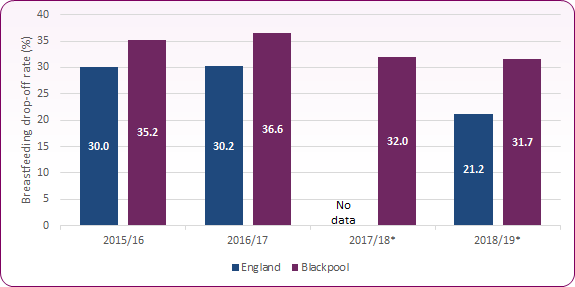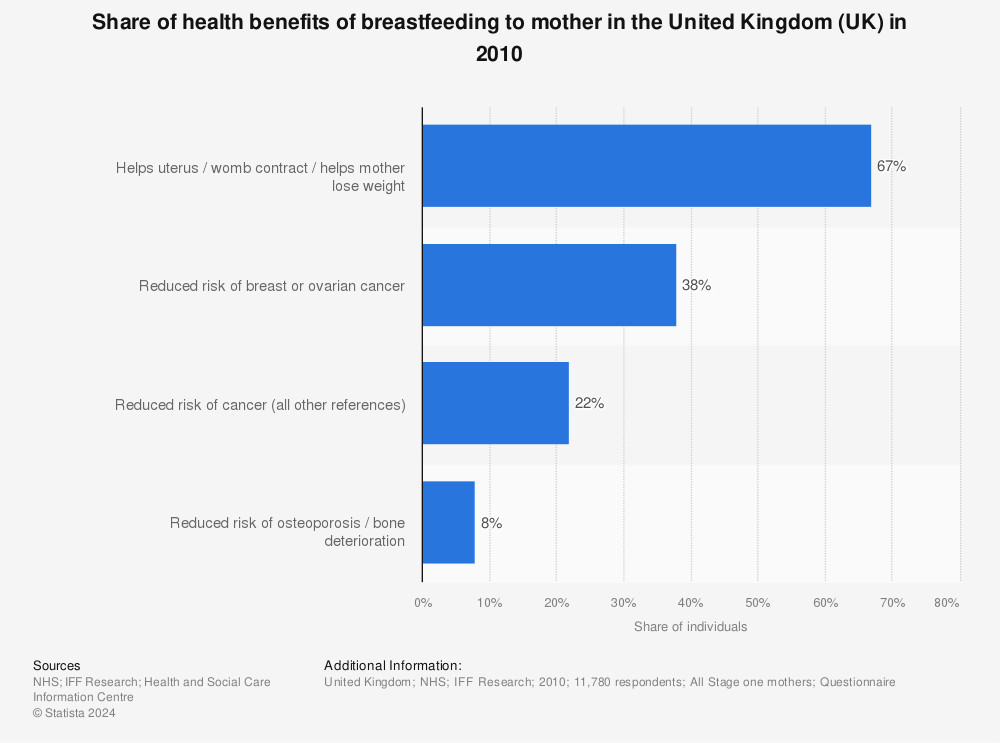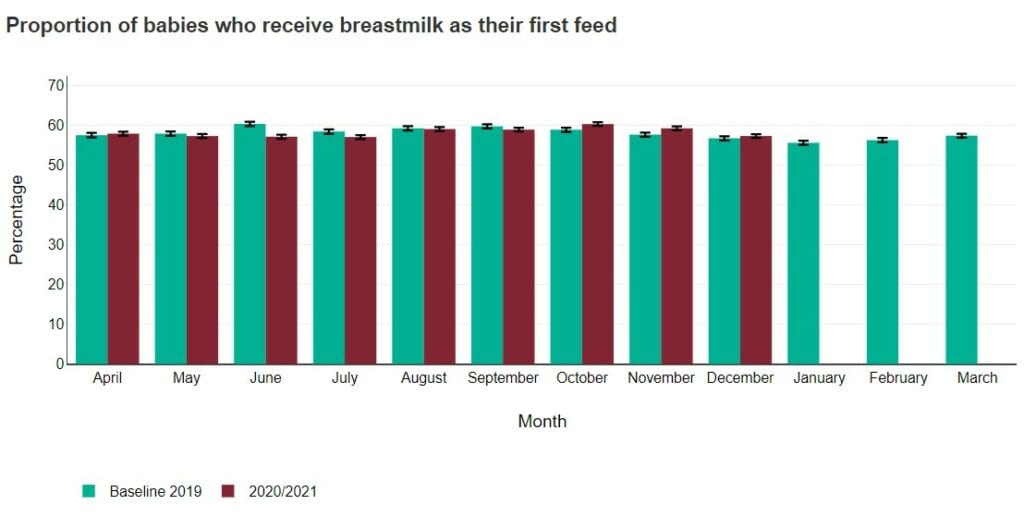While around two-thirds of mothers start breastfeeding3 4 this falls by 6-8 weeks after birth5 480 of mothers were breastfeeding in England6 439 in Scotland7 39 in Wales8 and 298 in Northern Ireland9. This is based on 145 out of 146 reporting local authorities submitting a.

Worldwide Prevalence Of Breastfeeding At 12 Months 2015 Statista
See below and the Department of Health for earlier and archived breastfeeding statistics.

England breastfeeding rates. The findings reveal that 95 of the mothers agreed that breastfeeding is their preferred choice for young babies73 breastfed or planned to breastfeed for 49 weeks or more. See NHS England for 6 to 8 weeks breastfeeding statistics from before October 2015. The rate was 431 in 2015-16 and 438 for 2014-15.
Any breastfeeding at 68 weeks mean 45 range 1983. Just over four in 10 mothers 427 breastfeed their babies when they are six weeks old according to 2017-18 data. During 201213 739 of mothers in England initiated breastfeeding and 472 were still breastfeeding at 6-8 weeks 8.
England The benefits of breastfeeding are clear. Our initiation rates are around 80 per cent but then drop off rates are really quite high and we are down to around half of babies being breastfed by the time they are six weeks. In England the Department of Health DH measures a.
Quarterly experimental statistics on breastfeeding prevalence at 6 to 8 weeks after birth for 2019 to 2020. The aggregate breastfeeding rate for England for Quarter 2 201920 is 481 with confidence intervals of 478 483. You may re-use this information excluding logos free of charge in any format or medium.
The lowest breastfeeding rates in Europe 7. The National Immunization Survey NIS uses random-digit dialing to survey US households with children and teens. The aggregate breastfeeding rate for England for Quarter 1 201920 is 479 with confidence intervals of 476 481.
Results There was considerable variation in breastfeeding across PCTs breastfeeding initiation mean 72 range 3993. Published statistics on breastfeeding including prevalence at 6 to 8 weeks after birth are available together with guidance on how to submit aggregate data to the central system. There is substantial variation between parts of England with 46 of infants breastfed at six to eight weeks in the East Midlands in 201920 compared to.
A beginners guide to the Fingertips API is also available together with the supporting Annex. By using the profiles it is envisaged that local organisations will be able to work in partnership to plan and commission evidence. Furthermore Dr Brown adds that It is free.
Compared to 201011 breastfeeding initiation rates for County Durham and England have increased slightly - 27 increase in County Durham and 08 increase in England The absolute and relative gaps between County Durham and England have slightly narrowed - the gap was. In the UK we know that our breastfeeding initiation rates do not compare favourably with the rest of Europe. If the rates could be raised to just 50 at six months this would save the NHS an estimated 40 million in prevented health problems.
17 up from 13 in 2005. Information is presented at local authority of residence PHE Centre and England level. CDC surveys breastfeeding practices in the United States to monitor progress over time and identify priority areas that need attention.
The Fingertips API best viewed in Chrome Firefox or Safari allows public health data to be retrieved in either JSON or CSV formats. This is based on 138 out of 140 reporting local. In England almost three quarters of mothers start breastfeeding 73 but this drops to 44 at 6-8 weeks Case study available in Portsmouth Today 23 March Start4Life Public Health Englands programme that helps parents adopt healthy behaviours launched a new interactive BreastFeeding Friend BFF ChatBot in the South East.
Financially high rates of breastfeeding not only result in savings to family budgets but also to the public purse due to reduced service. This collection reports on the number and proportion of women seen and assessed by a healthcare professional within 12 weeks and 6 days of their maternity the number and proportion of mothers who have initiated or not initiated breastfeeding and the number and proportion of infants who have been fully partially or not at all breastfed at 6-8 weeks. The Infant Feeding Survey which was last run in 2010 after which it was discontinued showed an 81 initiation rate dropping to below 50 at two months 34 at 6 months and 05 at one year.
Just 427 per cent of mothers breastfeed their babies when they are six weeks old according to most recent data for 2017-2018. As well as health benefits to mother and baby increased breastfeeding rates contribute to reducing health inequalities through improved outcomes. Breastfeeding is associated with lower rates of infection an improved bond between mother and child and lower rates of postnatal depression.
It provides current national state selected local level and some US territory estimates of vaccination coverage rates for US children aged 19. Child and Maternal Health. Exclusive breastfeeding at six weeks was 24 in England compared to 17 in Wales and 13 in Northern Ireland see below for more recent survey results from Scotland Exclusive breastfeeding at three months.
Public Health Englands Child Health Profiles provide a picture of child health and wellbeing for each local authority in England using 32 key health indicators including breastfeeding initiation and rates at 6-8 weeks and enables comparison at local regional and national levels. Exclusive breastfeeding at 68 weeks mean 32 range 1458 with. According to the Infant Feeding Survey just over a third 36 of mothers in England is still breastfeeding at six months 9.
PHE provides information to support commissioning of local infant feeding services.

Breastfeeding Health Benefit To Mother 2010 Kingdom Statista

Unicef Uk Baby Friendly Initiative Join Our Campaign Improve Health Breastfeeding Campaign

Breastfeeding Celebration Week Supporting Mothers Who Breastfeed Uk Health Security Agency